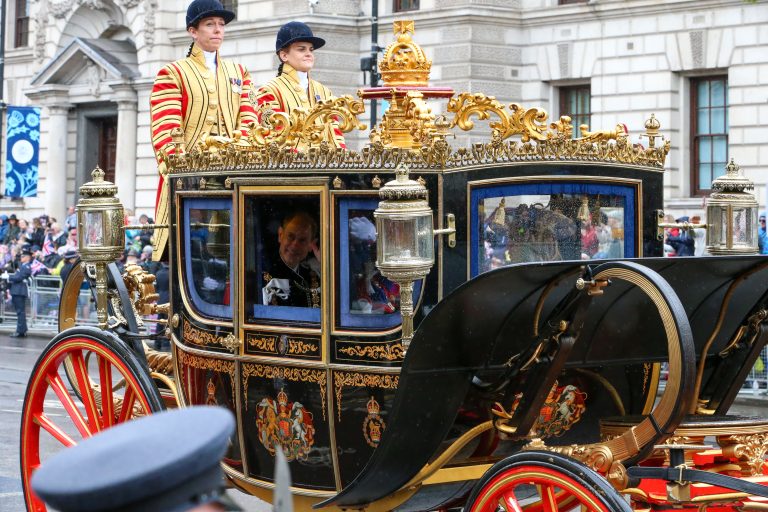

Few events in Irish history are as devastating—or as controversial—as the Great Irish Famine. It wasn’t just a natural disaster; it was a political, social, and humanitarian catastrophe that reshaped Ireland forever.
Between 1845 and 1852, over one million people died, and another two million emigrated, primarily to the United States, Canada, and Britain. The famine’s impact can still be felt today, from the scars on the Irish landscape to the diaspora that spread Irish culture across the world.
But who was responsible? Could it have been prevented? Did the British cause the Irish Potato Famine? These are questions that still spark debate.
This is the truth behind the famine, answering the big questions:
- How many people died in the Irish Potato Famine?
- Why didn’t the Irish eat other food during the famine?
- Did England take food from Ireland during the potato famine?
- What did Queen Victoria do about the Irish Potato Famine?
- What could have prevented the Irish Potato Famine?
Let’s peel back the layers of history and examine the Great Hunger, a tragedy that changed Ireland forever.
When Was the Irish Potato Famine?
The Irish Potato Famine timeline began in 1845 and lasted until 1852. The worst years were between 1847 and 1849, known as Black ’47, when starvation and disease reached their peak.
The famine was caused by potato blight, a disease that destroyed Ireland’s staple crop, leaving millions without food. However, the true tragedy was not the blight itself, but the British government’s failure to respond adequately.
What Caused the Irish Potato Famine?
The famine had multiple causes, but the biggest factor was Ireland’s dependence on the potato.
- By 1845, over 3 million Irish people (mainly the rural poor) relied almost entirely on potatoes for survival.
- When potato blight struck, entire harvests failed.
- Starvation and disease spread rapidly.
But was it just a natural disaster? Not quite. The British government’s policies made the famine far worse.
Did the British Cause the Irish Potato Famine?

The British government didn’t cause the blight, but their policies turned a crop failure into a humanitarian disaster.
- Food Exports Continued – Even as Irish people starved, grain, beef, and butter were exported to Britain.
- Laissez-Faire Economics – The British believed in free market policies and refused to interfere with food prices or distribution.
- Workhouses and Evictions – Instead of direct aid, the government forced starving people into workhouses, where many died.
- Racist Attitudes – Many British politicians saw the famine as a way to reduce the Irish population, believing the Irish were lazy or overpopulated.
So, while the British didn’t cause the blight, their response to the crisis was cruel, inadequate, and deadly.
Did England Take Food from Ireland During the Potato Famine?
Yes.
While millions of Irish people starved, Ireland continued exporting food to Britain.
- Between 1846 and 1847, more than 400,000 tons of grain, meat, and dairy were exported from Ireland to England.
- Armed guards often protected food shipments, while starving people begged in the streets.
This is one of the greatest controversies of the famine—there was food in Ireland, but the starving Irish had no access to it.
Why Didn’t the Irish Eat Other Food During the Famine?
Many people wonder: Why didn’t the Irish eat something else?
- They couldn’t afford it. Potatoes were cheap and easy to grow, but other food sources were expensive.
- They weren’t allowed to. Much of the land was owned by British landlords, who controlled what crops were grown.
- The famine devastated rural communities. Even if people wanted to fish or hunt, they were often too weak to do so.
By the time people turned to foraging for seaweed, grass, and even eating rats, it was already too late.
How Many People Died in the Irish Potato Famine?
Estimates vary, but at least one million people died—many from starvation, typhus, and dysentery.
- Entire families wasted away in their homes.
- People dropped dead in the streets.
- Mass graves, known as famine pits, can still be found in Ireland today.
The population of Ireland fell from 8 million to just over 6 million, and it never recovered.
How Did the Irish Potato Famine End?
The famine ended around 1852, but not because of British aid.
- The blight faded, allowing potatoes to grow again.
- Mass emigration reduced the population, making food shortages less severe.
- The British government finally provided better relief efforts, but by then, the damage was done.
For many, the famine didn’t end—it just changed form. The effects lasted for generations, forcing millions to leave Ireland forever.
Who Helped Ireland During the Famine?
While the British government’s response was inadequate, some international aid efforts helped:
- Native American Choctaw Nation – Donated money despite their own suffering.
- Ottoman Empire – Sent ships full of food and aid.
- Quakers – Provided soup kitchens and relief work.
- Private Donations – Many Irish-Americans sent money back to help relatives.
These acts of kindness are still remembered today.
What Could Have Prevented the Irish Potato Famine?
- Better land policies – If Irish farmers weren’t so reliant on one crop, the famine wouldn’t have been so deadly.
- Government intervention – Had Britain banned food exports and provided direct aid, many lives could have been saved.
- Less colonial control – If the Irish had control over their own food supply, the famine wouldn’t have been as severe.
Simply put: The famine was made worse by British policies and could have been prevented with better governance.
What Did Queen Victoria Do About the Irish Potato Famine?
Queen Victoria is sometimes called “The Famine Queen”—and not in a good way.
- She donated £2,000 to relief efforts, which was less than the Sultan of Turkey donated.
- She did not push her government to act more aggressively.
- Her visit to Ireland in 1849 was seen as a political stunt rather than a genuine act of compassion.
While she wasn’t directly responsible, her lack of strong leadership during the crisis made her a symbol of British neglect.
FAQs: The Truth About the Irish Potato Famine
Did the British cause the Irish potato famine?
They didn’t cause the blight, but their policies made the famine far worse.
What stopped the Irish potato famine?
The famine ended when potato blight faded, but not before millions died or emigrated.
Who gave Ireland food during the famine?
Aid came from Native Americans, the Ottoman Empire, Quakers, and Irish-Americans.
How many people died in the Irish potato famine?
At least one million people died, and two million emigrated.
Why didn’t the Irish eat other food during the famine?
They couldn’t afford it, and much of Ireland’s food was exported to England.
Final Thoughts: A National Tragedy That Changed Ireland Forever
The Irish Potato Famine wasn’t just a natural disaster—it was a man-made catastrophe. Millions suffered, not just from hunger, but from cruelty, neglect, and failed leadership.
To this day, the famine is a wound in Ireland’s history—one that shaped the nation, fueled rebellion, and forever changed the Irish identity.
🔗 Related Read: Why Are Irish People So Nice? The Truth Behind the Charm, the Wit, and the Warmth




